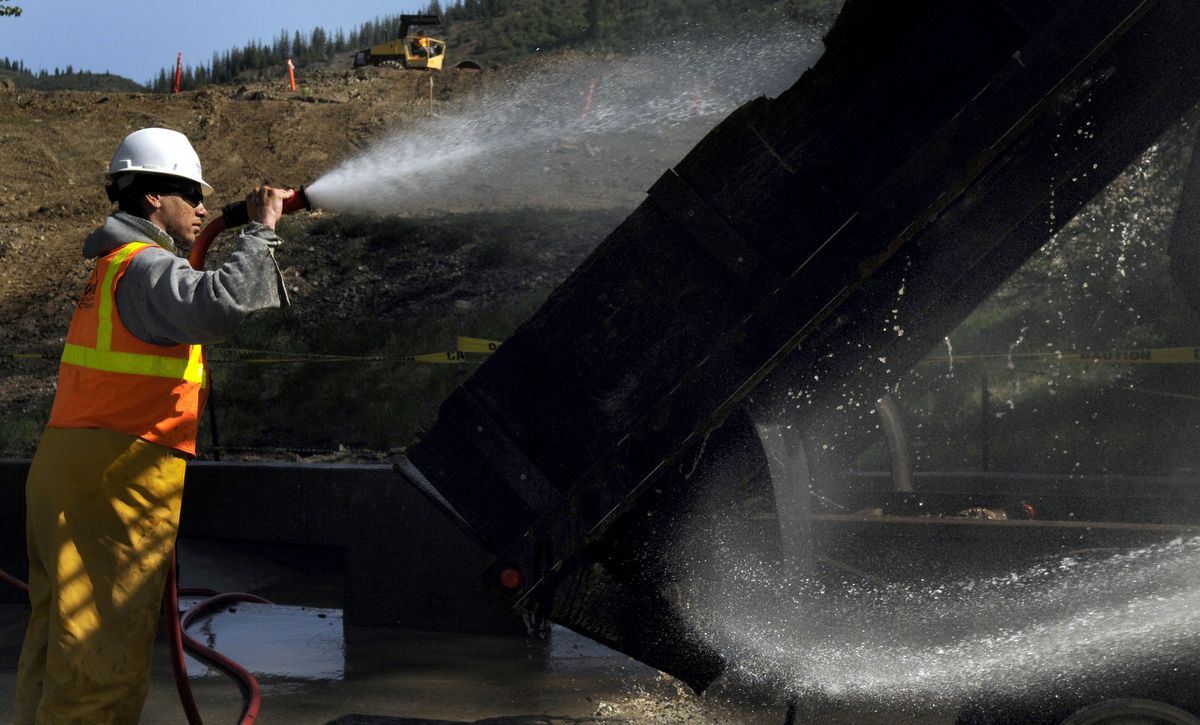Federal infusion is boon for laborers

In North Idaho’s recession-plagued Silver Valley, there’ll be an extra 70 high-paying seasonal jobs this summer removing and replacing lead-contaminated soil as part of the Bunker Hill cleanup, thanks to the federal economic stimulus.
“They’re good jobs,” said Mark Stromberg, Coeur d’Alene Basin project manager for the Idaho Department of Environmental Quality. They pay federal prevailing wages – “considerably higher than what normally would be paid in the Silver Valley.”
Thanks to the stimulus boost, work is proceeding intensively on the cleanup. The Big Creek repository is seeing as many as 300 trucks a day show up to dump contaminated soil.
“At that rate … we’re running a truck through decontamination every two minutes,” Stromberg said. “We lost people to the mines a couple of years ago. They’ve been laid off, and now they’re coming back. So there’s a lot of opportunity for people.”
The federal money also will pay for hundreds of construction workers, heavy equipment operators, surveyors, inspectors and others to work on the long-awaited, $37 million replacement of Dover Bridge near Sandpoint.
And federal grants and loans for everything from replacing the water system in central Shoshone County to rebuilding heavily traveled streets in Kootenai County will put contractors and subcontractors to work. Overall, the White House estimates that the federal economic stimulus funding will “create or save” 17,000 Idaho jobs over the next two years.
Most of those will fall into the “saved” category – nearly 60 percent of the more than $1.2 billion in federal stimulus funding for Idaho is going to education or health and welfare programs, where it will mostly soften the blow from state budget cuts and layoffs. But there will be new jobs. Many of them, like those for the Silver Valley cleanup and Dover Bridge construction, are temporary. State officials hope the temporary boost to the economy will help the state ride out the recession that pushed Idaho’s unemployment rate to 7 percent in April – nearly double where it stood a year earlier – and into double digits in parts of North Idaho. Benewah County has the state’s highest unemployment rate: 15.4 percent.
“Every county in the state has more unemployed than a year ago,” said Roger Madsen, director of the Idaho Department of Labor. The stimulus, he said, is “helpful to the economy, and … it’s been very good for Idaho workers.”
Stimulus money has both increased and extended unemployment benefits for laid-off Idaho workers, Madsen noted. It’s allowing them to pay their bills and support local businesses while they look for new work.
Idaho chose to funnel nearly all its federal stimulus money into existing programs, stepping up funds for communities to upgrade drinking or wastewater systems and fix roads, offsetting budget cuts for everything from child immunization programs to colleges and universities, and targeting long-needed but never-funded major highway projects, including the replacement of the deteriorating Dover Bridge on U.S. Highway 2.
In addition to the $1.2 billion flowing through Idaho’s state budget, federal stimulus money that’s coming directly through federal agencies or through grant programs will bring millions of dollars more to Idaho, including $468 million to the Idaho National Laboratory in eastern Idaho through the Department of Energy, and $10.2 million through the U.S. Forest Service for three hazardous fuel reduction projects in Idaho forests.
“That’s going to create and save some jobs,” Madsen said.